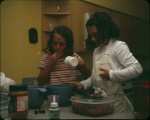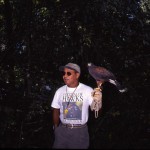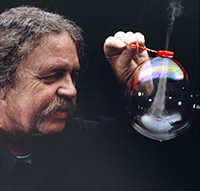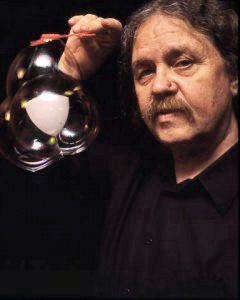Looking over my earlier efforts at winter landscapes, I decided that my lighting decisions were too conservative and would never capture the feel of a winter snowscape. In February of 2014, I tried to change that by using more aggressive sun angles and shooting into the light. I didn’t want to go full contre jour because so much of what I find engaging are the textures of the surfaces, and MF3D is superb at capturing textures.
Here, I tried to position the camera so both lenses were shaded by the distant trunk, and positioned a flash on the left. I then waited while the earth turned, and tripped the shutter as the shadow-line reached the camera.
The result is the the best representation I’ve been able to make of a Juneau winter day. The sky isn’t blown out, but is a featureless sea with a floating sun. The trees are more than silhouettes and able to contribute to the story.
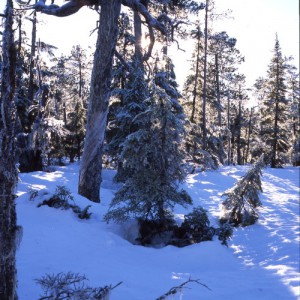
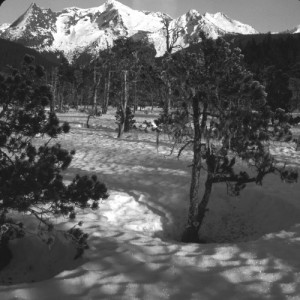
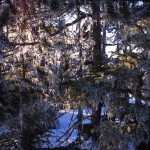
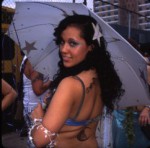
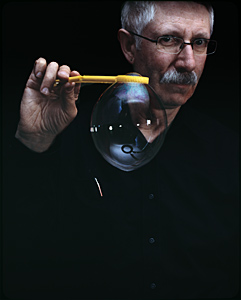 Our fearless leader John has suggested we all enter self-portraits. So here you go. A couple years ago I was preparing to have a photo session with my friend (and master bubble blower) Tom Noddy. I wanted to work out the kinks before Tom came over so I experimented. Can’t remember if I had a digital slr at the time but that would have been invaluable. I’m sure I took readings from a flash meter plus I did some tests for DOF with a tape measure running away from the camera. My memory is that the tape measure showed focus on the inch numbers 28 through 32 but the notes on this image indicate a wider range.
Our fearless leader John has suggested we all enter self-portraits. So here you go. A couple years ago I was preparing to have a photo session with my friend (and master bubble blower) Tom Noddy. I wanted to work out the kinks before Tom came over so I experimented. Can’t remember if I had a digital slr at the time but that would have been invaluable. I’m sure I took readings from a flash meter plus I did some tests for DOF with a tape measure running away from the camera. My memory is that the tape measure showed focus on the inch numbers 28 through 32 but the notes on this image indicate a wider range.